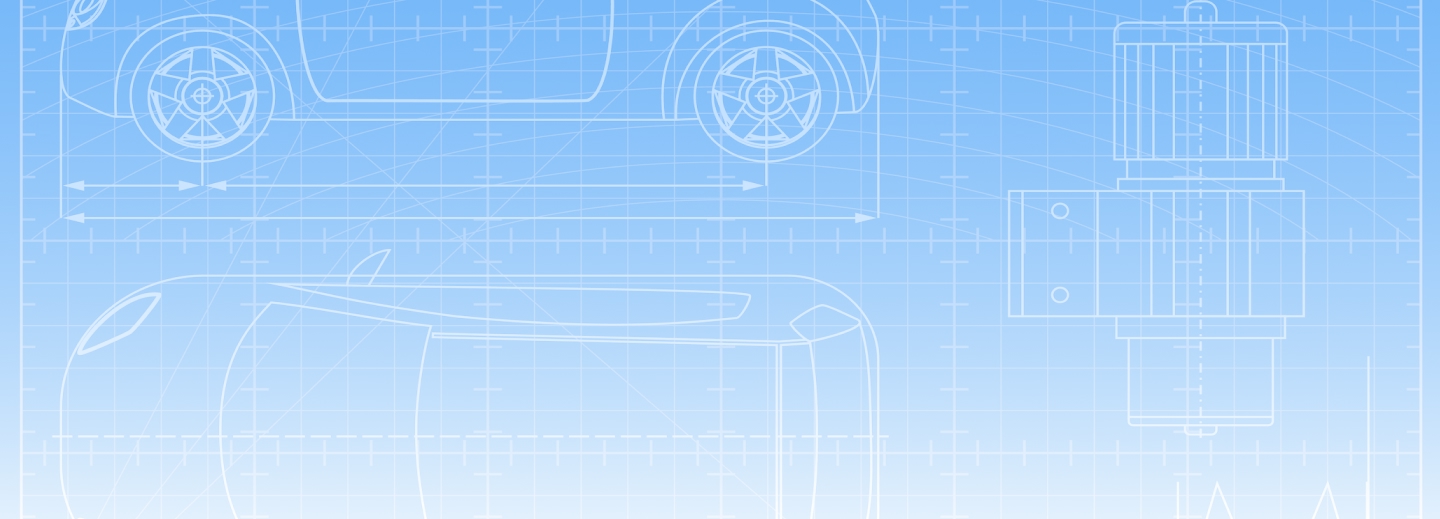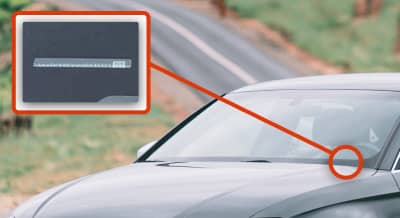


Lookup a Vehicle Build Sheet
Get a free build sheet from select automakers
* Build sheets are $8.95. If one is unavailable, try our window sticker tool.
What is a vehicle build sheet?
A build sheet is a document created by an automotive manufacturer detailing exactly how a specific vehicle was configured when it left the assembly line. A build sheet is tied to a single vehicle's unique Vehicle Identification Number (VIN). It identifies the vehicle's exterior and interior color codes, engine and transmission specifications, axle ratio, factory-installed options, and other production details. Build sheets are used in vehicles assembly plants to ensure a car is built according to its designated components and features. Build sheets offer an authoritative reference for the original configuration and any special equipment that was installed at the time of production.
Why are build sheets important?
While a build sheet's primary purpose relates to vehicle assembly, they have value for various reasons after a vehicle is built. First, they confirm a car's authenticity. Collectors, enthusiasts, and sellers and buyers refer to these sheets to verify that a classic or high-value car retains its original specifications. This confirmation can greatly impact a vehicle's market value and desirability. Second, they guide restorations; for older and classic vehicles, owners and restorers rely on build sheets to determine accurate paint codes, interior fabrics, and factory options, ensuring a historically correct outcome. Third, mechanics and service technicians often consult build sheets to understand a vehicle's original setup, which can simplify maintenance and repairs. Furthermore, build sheets contribute to a well-documented vehicle history, proving useful in cases of disputes over originality or when administrative references—such as recalls or warranty claims—become necessary. Finally, they serve as a permanent manufacturing record that details exactly how the car left the factory, which is helpful for manufacturers, dealerships, and owners alike.
How Do I Get a Free Build Sheet?

Find the vehicle's VIN number
You can typically find the VIN on the driver's side dashboard near the windshield or on the label inside the driver's door frame.

Enter the VIN
Enter the 17 alphanumeric VIN in the VIN box and click the "Look Up Build Sheet" button.

Get the build sheet
You will see a build sheet if there is one available. Download, save or print it.
Frequently Asked Questions
How do build sheets differ from window stickers?
Though they may sound similar, build sheets and window stickers (often known as Monroney labels) serve different purposes. Build sheets are highly technical documents used by factory personnel during production; they include component codes, manufacturing details, and other information not intended for public viewing. They often list internal part numbers, supplier data, and production codes that require decoding to interpret. Meanwhile, window stickers are federally mandated disclosures presented to prospective buyers on new vehicles at the dealership. They are formatted for easy consumer understanding, covering the Manufacturer's Suggested Retail Price (MSRP), fuel economy, warranty details, and primary vehicle equipment and options. Window stickers use plain language, show pricing information, and adhere to a regulated layout. In short, a build sheet is a vehicle production tool offering a precise blueprint of how a vehicle was assembled, while a window sticker focuses on consumer-facing information such as price, standard and installed optional equipment, and regulatory data.
How can I obtain a build sheet for my vehicle?
Acquiring a build sheet will depend on your vehicle's age and manufacturer. Many modern vehicles (built from around 2000 onward) have digital build records. Owners can retrieve these build sheets through services like iSeeCars' Build Sheet by VIN tool.
For older or classic vehicles, the process can be more involved. Owners of General Motors cars may reach out to the GM Heritage Center, consult the National Corvette Restorers Society for Corvette-specific records, or explore the GM Historic Collection. Ford owners can request a Marti Report from Marti Auto Works, contact the archives at The Henry Ford museum, or consult model-specific clubs. Mopar enthusiasts (Chrysler, Dodge, Plymouth) can contact Stellantis Historical Services, explore the National Chrysler Registry, or reference Galen Govier's Registry.
In some cases, older cars can have their original paper build sheets hidden in the car itself. Likely locations include under the carpet, behind door panels, under seat cushions, or near the spare tire well. Additional sources of documentation include a vehicle's original selling dealer (if it still exists), previous owners, enthusiast clubs, and auction companies. When requesting a build sheet from an official or third-party source, be prepared to provide your full VIN (or the appropriate identification for pre-1981 models), proof of ownership, payment for any applicable fees, and sometimes the approximate production date.
Where were build sheets placed in classic American cars?
For many classic American vehicles, physical build sheets were left in various spots by the original assembly line workers, often inadvertently preserved for decades. General Motors cars might have their build sheets under the rear seat cushion, inside door panels, beneath the carpeting, or glued on top of the gas tank. In Corvettes, the glove box area was another frequent hiding place. Ford vehicles can have build sheets behind kick panels, under package trays in coupes, under headliners near the C-pillars, or tucked inside door panels (common in Mustangs). On Chrysler, Dodge, and Plymouth (Mopar) products, typical locations included inside rear quarter panels, behind the dashboard on A-body models, or between the seat springs and the underside of the seat cushion. American Motors vehicles might have build sheets under the rear seat, taped to the firewall, or above or below the glove compartments. These sheets were never designed for the vehicle owner, which makes discovering one a delightful surprise for collectors and restorers alike.
How do digital build records differ from traditional paper build sheets?
With the transition from paper to electronic documentation in the late 1980s and 1990s, build records became part of large-scale digital databases. Traditional paper build sheets were physical documents moving along the assembly line, easily lost or damaged. They sometimes featured handwritten notes or inspector stamps, and they often ended up in company archives — if they were preserved at all. By contrast, digital records are stored in manufacturer databases and can be updated in real time throughout a vehicle's production. They offer far more granularity, such as individual component serial numbers, and integrate seamlessly with dealer ordering systems, warranty records, and recall management processes. These electronic systems also facilitate greater traceability, as every step of the build can be logged and accessed digitally. Nonetheless, the level of detail and public availability of digital build records vary by manufacturer.
How have build sheets evolved over time?
From the 1920s through the 1940s, documentation was mostly handwritten production cards, rudimentary in detail and often discarded once production was complete. The 1950s introduced IBM punch cards and more standardized formats. By the 1960s, with muscle cars rising in popularity, manufacturers began using more comprehensive broadcast sheets that itemized option codes and quality-control data. In the 1970s, emissions regulations added additional certifications to the documentation, and computer-generated sheets started appearing.
The 1980s was a transitional period, with barcode systems and database tracking emerging. By the 1990s, build sheets were largely computerized, interfacing with just-in-time inventory systems and providing real-time assembly updates. In the 2000s, web-based documentation and global manufacturing networks paved the way for enhanced security, digital signatures, and component serialization. Today's build sheets—entirely digital—often incorporate "digital twins," real-time manufacturing execution systems, and vast data sets that track a vehicle's entire production lifecycle.
What are the most common mistakes when interpreting build sheets?
Misreading codes and dates are frequent errors when trying to understand a build sheet. For instance, option codes such as L34 versus L35 can be mixed up, or year-specific codes might be applied incorrectly to vehicles from a different era. Another pitfall is confusing the build date with the dealer delivery date or mixing up date formats (e.g., day-month-year vs. month-day-year). Document authenticity is also a concern: some sheets are incomplete, reproduced, or tampered with, leading to mismatched VINs or altered options. In addition, it is easy to assume every code on a sheet was installed on the final car, though production substitutions or mid-run changes could make the documented data inaccurate. Enthusiasts can misinterpret partial codes, confuse standard equipment with optional features, or overlook the uniqueness of certain plant-specific codes. The best safeguards against these mistakes include consulting manufacturer-specific guides, verifying date codes, and seeking expert opinions when confronted with unusual specifications.
What do OEM part numbers on build sheets tell us?
OEM part numbers reveal both the identity and provenance of the components used to assemble a particular vehicle. They specify the correct design generation or revision, the manufacturing source (whether in-house or supplier-provided), and occasionally the production batch or run date. For instance, General Motors part numbers often include a division identifier (e.g., "1" for Chevrolet or "2" for Pontiac), while Ford's alphanumeric system may begin with a letter denoting the decade (C for the 1960s, D for the 1970s, etc.) followed by a digit for the year in that decade. By comparing part numbers to documented references, restorers can confirm the originality of key components such as engine blocks, transmissions, and body panels. Over the years, part numbering systems evolved from simple numeric codes to more sophisticated alphanumeric and barcode-based systems, reflecting the industry-wide move toward greater traceability. For those restoring or authenticating a vehicle, correct matching part numbers are a crucial piece of the puzzle.
How do build sheets differ for special models and limited editions?
When it comes to performance-oriented or limited-edition vehicles, build sheets frequently highlight unique configurations. Performance cars—such as Chevrolet's Camaro Z/28 or Ford's Boss Mustangs—may feature distinctive option or package codes (e.g., Z28, GT, or Drag Pack) that call out specialized engines, heavy-duty suspensions, or other exclusive components. Build sheets for Mopar "wing cars", like the Superbird or Daytona, often note specialized aerodynamics packages or track-focused equipment.
Limited editions, such as anniversary or pace car models, might have sequential numbering systems ("Vehicle X of Y") and references to special paint, trim, or badging. Some manufacturers include supplemental paperwork outlining these one-off features, dealer allocation processes, or factory instructions for optional extras. In Ford's case, Shelby-branded cars might have entirely separate lines of documentation for their performance modifications. For Chrysler products, packages like A12 or A13 appear as distinct broadcast codes on the build sheet. Essentially, limited-run models involve unique combinations of part codes, special handling instructions, or production tracking references that set them apart from standard production vehicles.
How are build sheets used in vehicle restoration?
Build sheets provide essential guidance for restoring a car to factory-correct specifications. They help restorers verify the original paint color, finish type (such as lacquer, enamel, or special matte finishes), and stripe packages. The same applies to interior materials: the build sheet will typically list the original upholstery fabric, carpet color, headliner material, and unique trim pieces. On a mechanical level, engine and drivetrain data—such as displacement, carburetor type, correct manifolds, and proper transmission gear ratios—ensures that the restored vehicle matches its original performance specs.
For concours-level restorations, enthusiasts also interpret assembly-line markings or quality-control stamps noted on the build sheet. These references can guide the placement of chalk marks, decals, or the correct paint daubs on suspension components. In official judging, a documented build sheet is a powerful tool for proving that each component is era-correct and consistent with the car's initial build order. Beyond this, build sheets bolster an owner's confidence in the completeness and accuracy of the restoration, potentially boosting the vehicle's value for shows, auctions, or insurance purposes.
What are common myths and misconceptions about build sheets?
One common myth is the belief that every vehicle still has its original build sheet readily available. In truth, many archives were lost over decades or destroyed when companies merged, restructured, or closed certain factories. Another misconception is that build sheets always list every single option on a vehicle; sometimes dealer-installed accessories or mid-year production changes were logged separately or not at all. People also occasionally assume that without a build sheet, a car cannot be authenticated. However, there are many other methods (casting numbers, original photographs, expert inspections) to verify a vehicle's authenticity.
Some collectors mistakenly believe that all reproduction build sheets are fraudulent; in reality, certain legitimate replicas exist for documentation or insurance purposes and are clearly marked as reproductions. Others think every item on the original sheet actually made it onto the vehicle, yet last-minute production changes, strikes, or part shortages often led to substitutions or deletions. Another myth is that modern vehicles no longer have build sheets, when in fact, they do—only in digital form. Lastly, people sometimes expect every build sheet to look alike, but formatting varies by era, factory, and brand, and especially between export and domestic models.
How do export models differ in their build documentation?
Export models often contain specialized references for international standards and shipping. Manufacturers may specify unique lighting setups, market-specific safety features, or emissions compliance for a targeted region. Documentation might also include information on left-hand drive conversions for markets that typically use right-hand drive. In European-bound vehicles, for example, you could see references to ECE regulations or type approval certificates, while cars bound for the United States from overseas may note Department of Transportation requirements, EPA emissions standards, or additional references for the California market.
Language and terminology can vary as well—some documents feature bilingual or multilingual entries where the primary language of the manufacturing country is supplemented by details in English, French, or other languages required for the destination market. VIN structures may differ slightly, export codes might appear on the documentation to signify regional packaging, and owners could see references to international measurement standards. These distinctions ensure that export-spec vehicles comply with the regulations, tariffs, and environmental requirements of their destination countries, making export build sheets a fascinating and sometimes more complex variation on standard production records.






